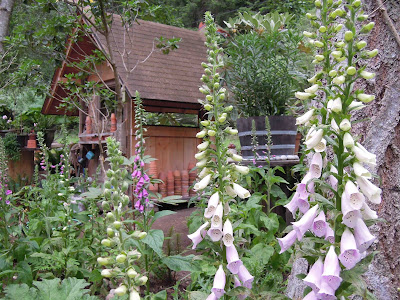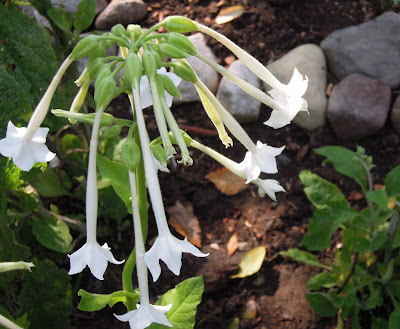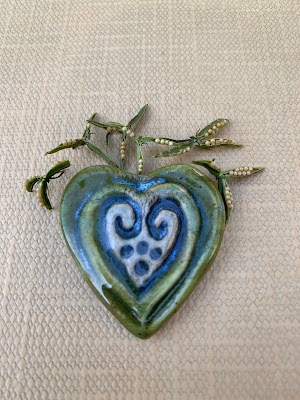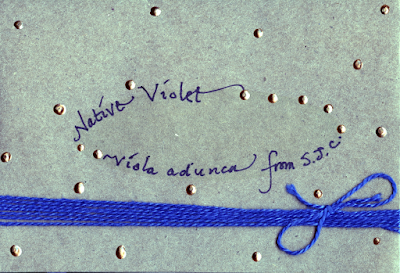 |
Foxgloves (Digitalis purpurea) A pollinator garden without a deer fence. Gatehouse Seeds, Shaw Island, San Juan Archipelago, WA. |
 |
GARDENING IN THE SAN JUANS
By Mary Murfin
There is an inherent paradox for anyone gardening in the SanJuan Islands because the natural landscape is already rich in beauty. Thick, cushiony moss, pine-trees dramatically dwarfed and twisted by their scramble for a foothold on rocks, smooth-skinned madrona trees which blossom in the spring and provide Christmassy berries in winter, and hedgerows of dog roses and snowberry are all part of the complex texture of the islands' natural wild gardens. It might seem more madness to try to improve on this, but any gardener worth his salt is challenged by the chance to enhance, focus, and frame such a masterpiece--or else, simply wants to plant potatoes.To some old-timers "garden" means "vegetable garden" and nothing else, as per a statement by an old friend. "she's got so many flowers she hasn't got room for her garden." But gardening on the islands, in any sense of the word, whether for the practical pleasure of delicious home-grown vegetable, to rehabilitate an area disturbed by construction or logging, or simply for the love of gardening, is beset by limitations. The soil is not always good, being often either rocky or boggy. Destructive high winds come whipping off the sound. Late summers can be drought-dry. But the one biggest enemy of the island garden is the deer.
The attitude of islanders towards deer is completely schizophrenic. Everyone loves them and everyone hates them, alternately -- depending on whether they are presenting a charming tableau (doe, fawn, and buck in the meadow) or raising havoc in the flowerbeds. The most common solution to the problem of the deer is a completely fenced garden but a better solution is planting a garden that uses deer-resistant materials.
It must be admitted that no deer-resistant material is absolutely deer-proof. In areas where the deer population is sufficiently dense, gardens have been stripped clear of all plants, including parts of young pines. But in an area with an average deer population, and this would include the major San Juan Islands, the creatures will be steadfastly uninterested in deer-resistant plantings and wander off to where a greenhorn island gardener has unwittingly planted deer feasts of cabbage roses.
The variety and beauty of plant materials--native and non-native--that don't tempt the deer is surprising. One might assume that these would be dry, unappetizing little seedlings and prickly grasses. It is quite the contrary. Take, for example, the daffodils that grow abundantly on the islands. Planted first, by early settlers, they are now nearly native in their prolificity. Another native favorite is the foamy Queen Anne's lace, which blooms in summer.
Other attractive plantings, unattractive to the deer, are the shiny-leafed barberry with its red clusters of beads; the frothy, sliver-pronged Santolina; heathers, both white and purple; most types of Rhododendrons; sweet-smelling Daphne; lavender; and almost all herbs. Boxwood and cotoneaster shrubs are good safe plantings. So are the evergreen Mexican orange (Choisya) and nandina, better known as heavenly bamboo. Of course, all types of conifer, juniper, pines, and yew are useful deer-resistant basics.
Surprisingly, most old fashioned perennials will be passed up by the deer as well. These include Oriental poppies, bleeding hearts, Lupine, Iris, and Shasta daisies.
More unusual is the blue-flowered Ceanothus, which also attracts bees and butterflies, the Cistus rock rose and the pheasant's eye Narcissus. Also unusual and irresistibly beautiful is the hellebore, with a translucent green or grape-colored flower.
With this range of choice, many types of deer-resistant gardens are possible: herb gardens, herbaceous borders, bog gardens, even formal gardens.
Some of the most beautiful island gardens are the old farm gardens with meadows and fruit trees supplemented by a fenced vegetable garden. One very successful type of garden, which is inspired by the farm garden and taken its cue from nature, is the meadow garden. It is easy to put in and easy to maintain. the native landscape is allowed to run right up to the house on two or three sides and the front of the house is a meadow instead of a lawn. Planted in the meadow are daffodils, Queen Anne's lace, Oriental poppies, lupin, and other perennials. The flowers, which are planted randomly, provide glorious color but still look natural and almost accidental. The meadow lawn needs to be mowed only once or twice a year, in late spring after the daffodils have gone.
Close to the house, borders of lavender, hellebores, Santolina, euphorbia, etc., could be put in. Complementing this would be a small fenced area for a vegetable and cutting garden. One can grow abundant lettuce, carrots, peas, squash, tomatoes, and other vegetables in a relatively small area, leaving fenced room for roses, anemones, and other cutting flowers.
Another aspect of island gardening is the weekend or summer gardener. For summer and weekend gardeners the solution lies in permanent plantings of native deer-and-drought-resistant materials and the importation of big planter pots full of brightly colored annuals to place on a deck or porch.
Island gardeners, working within the limitations set by weather, terrain, hungry deer, and an already beautiful natural setting, often come up with gardens that are more successful because of these very limitations.
The Pilot
Published by the Island Record, San Juan County, Wa.
Vol. 3, No. 1, April/May 1983.





























